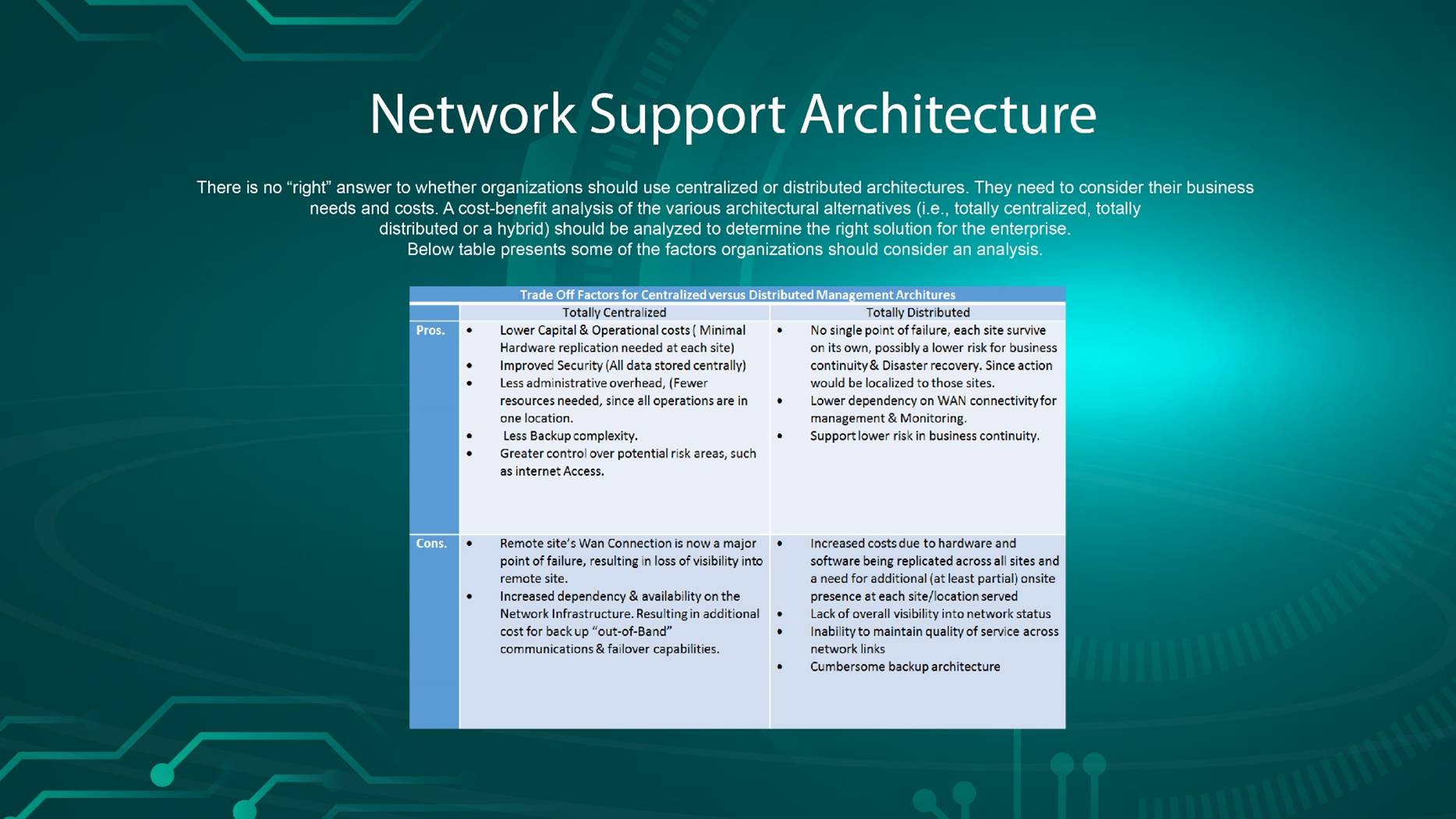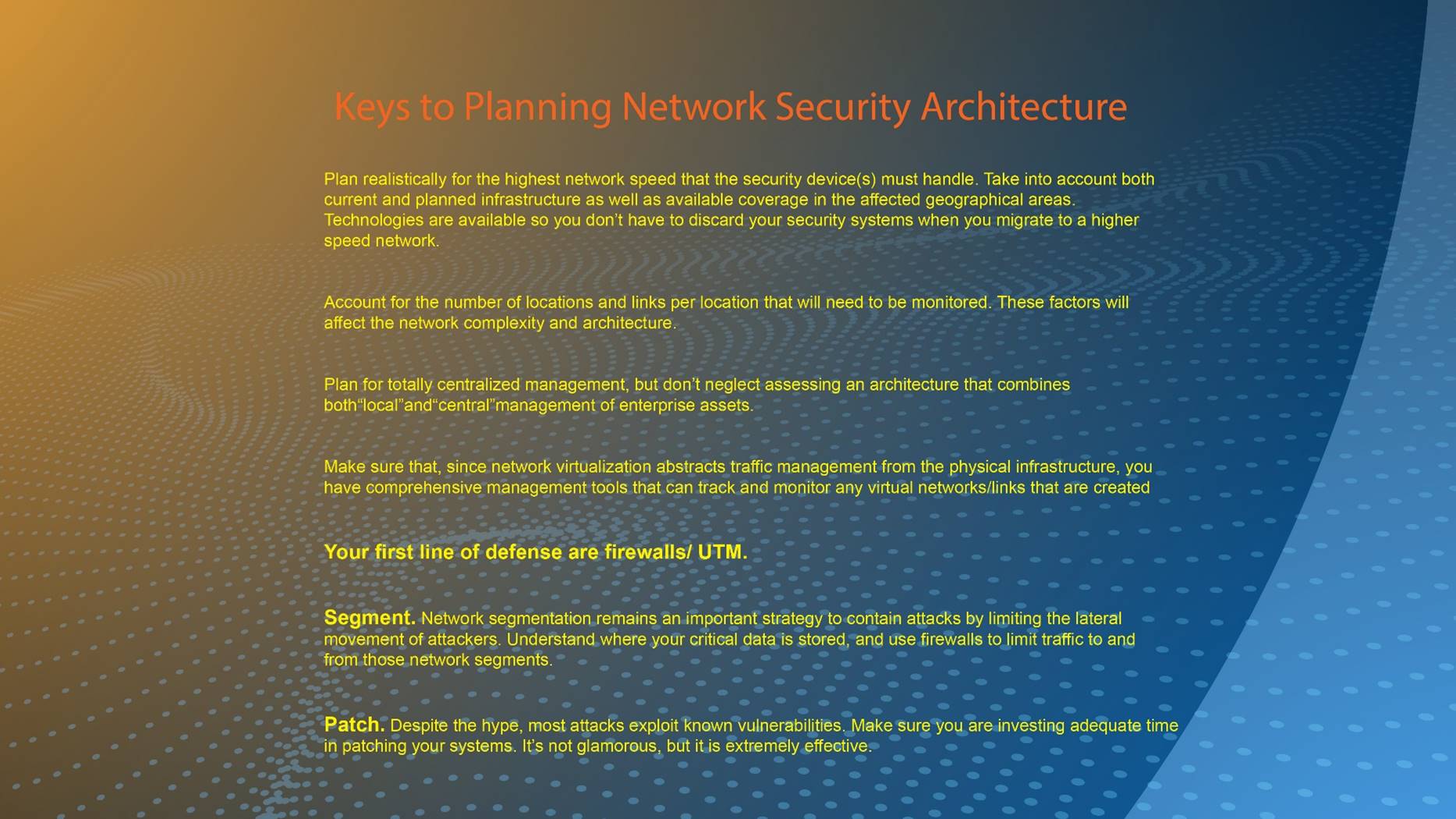We are a professionally managed System Integration company.
We are working into networking domain like LAN/WAN, Switching & Routing, Campus Wi-Fi, Bandwidth Optimization, Load Balancing, EPABX, IP Telephony, Server, Storage and backup solutions, CCTV Surveillance & ACS, Virtualization, Disaster Recovery Solutions etc.
In Security domain, We provide Next Generation Firewall, Endpoint Security, Server Security, DLP, IDS & IPS, APT etc.
We provide Infrastructure service in LDAP/AD, OPEN SOURCE etc.


10 Best Practices for Cyber Security
- Implementing a formal information security governance approach Establishing and maintaining a framework that provides assurance information security strategies are aligned with and support the business is more important than every shiny tool in your security stack, and is also a great starting point. When selecting one of these methods, ensure your program provides the ability to employ a risk-based approach and enables your teams to detect incidents, investigate effectively, and respond quickly.
- Stop Data Loss Most enterprises rely on employee trust, but that won’t stop data from leaving the company. The truth is, users steal data. A recent survey of more than 1,500 security professionals found that data exfiltration from an endpoint is the top security concern of 43% of them. Now, more than ever, it is extremely important to control access, monitor vendors and contractors as well as employees, and know what your users are doing with company data.
- Detect Insider Threats Your biggest asset is also your biggest risk. While well trained users can be your security front line, you still need technology as your last line of defense. Monitoring user activity allows you to detect unauthorized behavior and verify user actions are not violating security policy. Insider threats may go undetected, but the fact of the matter is insider breaches are extremely costly.
- Back Up Data Backing up your files may seem like common sense, but any organization that has been hit with ransomware – such as Petya or Wannacry, will tell you how important it is to ensure this best practice. It is crucial for organization to have a full working back up of all of data not only from a basic security hygiene prospective, but also to combat emerging attacks.
- Beware of Social Engineering The technology and IT security policies you implement doesn’t replace the need for common sense or eliminate human error. Social engineering tactics have been used successfully for decades to gain login information and access to encrypted files. Attempts may come from phone, email or other communications with your users. The best defense is to…
- Educate and Train Your Users No matter how gifted, your users will always be your weakest link when it comes to information security. That doesn’t mean you can’t limit the risk through regularly educating your users on cyber security best practices. Training should include how to recognize a phishing email, create and maintain strong passwords, avoid dangerous applications, ensure valuable information is not taken out of the company in addition to other relevant user security risks. In these sessions, it may feel like you are putting your people to sleep or it might be going in one ear and out the other, but training your people on proper cyber security hygiene is critically important. Finding creative ways to make the training stick will go a long way.
- Outline Clear Use Policies for New Employees and 3rd Parties To strengthen and clarify the education you give your users, you should clearly outline the requirements and expectations your company has in regards to IT security when the first hire them.Make sure that employment contracts and SLAs have sections that clearly define these security requirements
- Update Software and Systems With cyber-criminals constantly inventing new techniques and looking for new vulnerabilities, an optimized security network is only optimized for so long. Even as recent as a couple months ago, organizations fell victim to a major breach with the Heart bleed vulnerability. To keep your network protected, make sure your software and hardware security is up to date with the latest and greatest.
- Create an Incident Response Playbook No matter how well you follow these best practices, you still may get breached. In fact, nearly half of organizations suffered a security incident in the past year. If you do, having a response plan laid out ahead of time will allow you to close any vulnerabilities, limit the damage of a breach, and allow you to re mediate effectively.
- Maintain Compliance Hopefully these best practices are a useful guideline for keeping your business safe, but you do have another set of guidelines available to you. Regulations like HIPAA, PCI DSS and ISO offer standards for how your business should conduct its security. More than a hassle which you need to prepare audit logs for, compliance can help guide your business. Observer is trusted on millions of endpoints across every major vertical and is the only insider threat monitoring and prevention solution that empowers security teams to detect insider threats streamline the investigation process, and prevent data ex filtration


